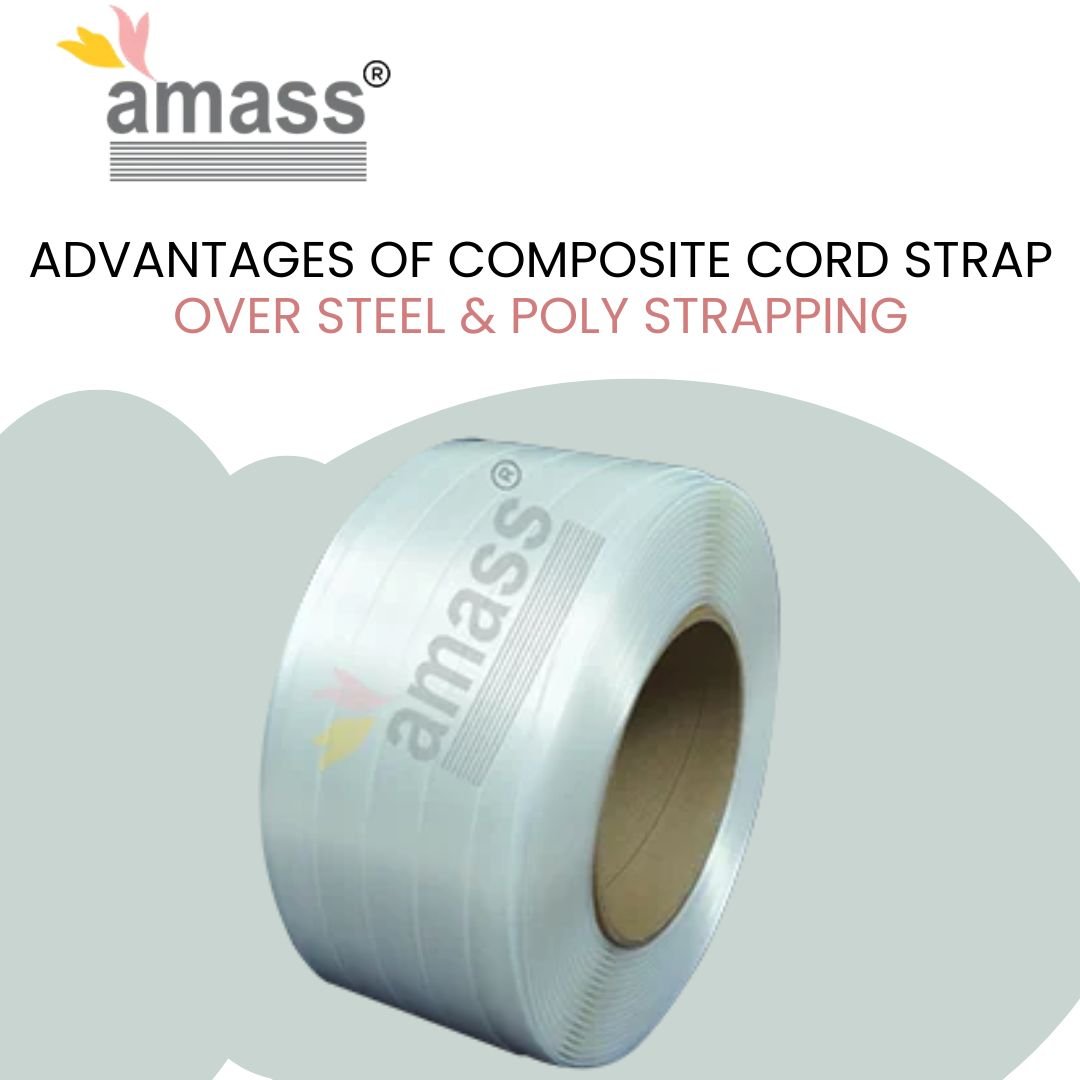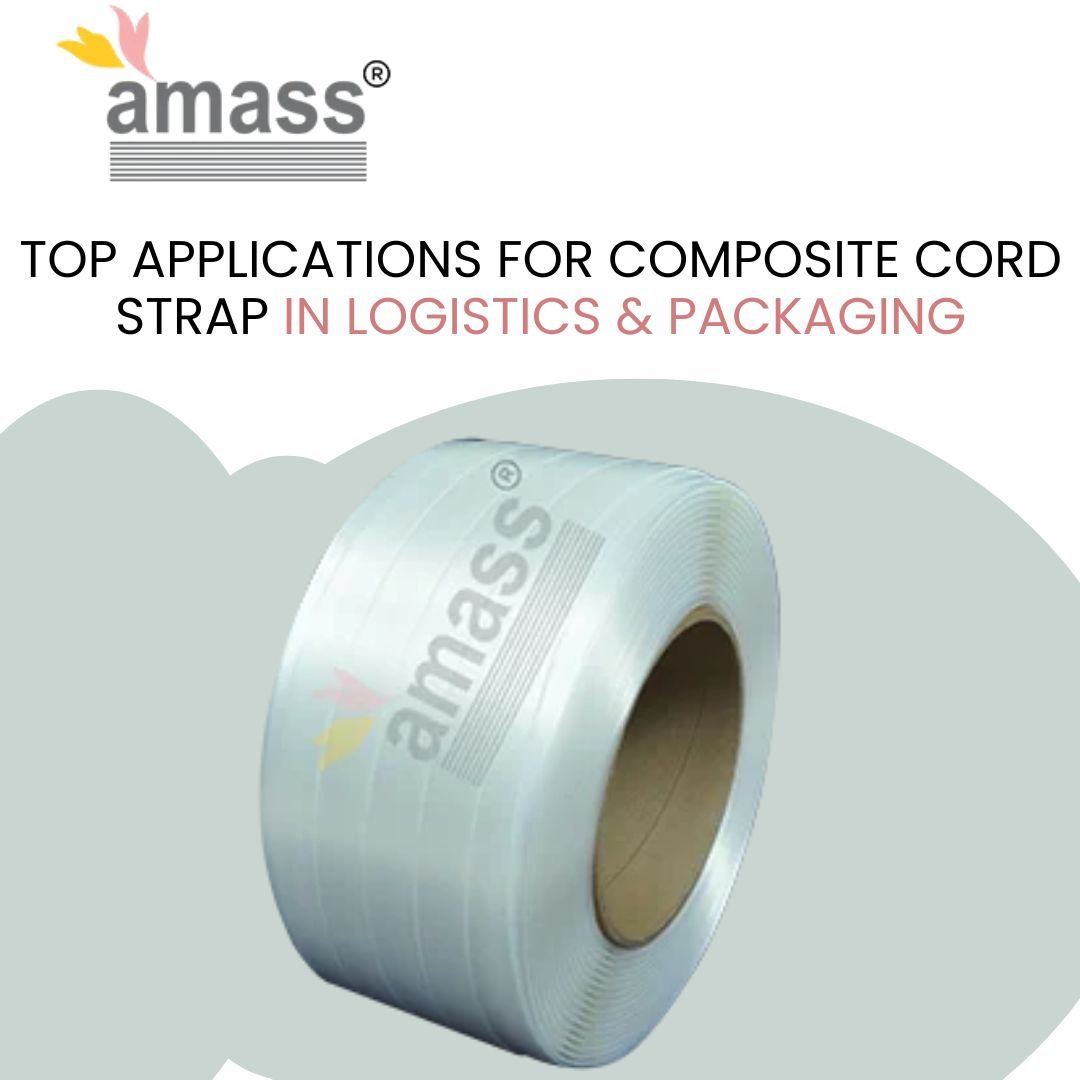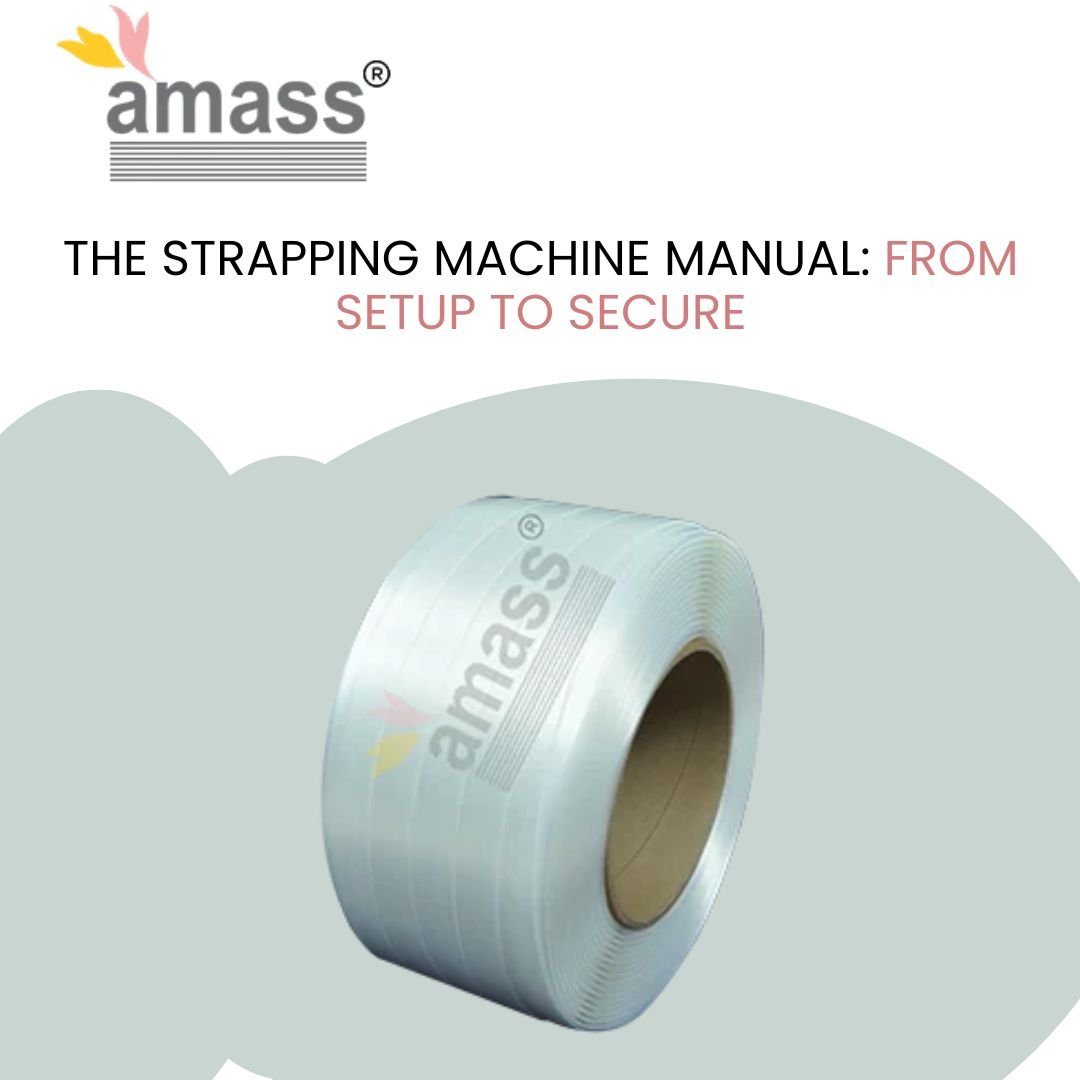Advantages of Composite Cord Strap over Steel & Poly Strapping

The Strapping Machine Manual: From Setup to Secure
September 22, 2025
Cost-Efficiency of Composite Cord Strap for Bulk Shipping
October 10, 2025Steel strapping has injured more warehouse workers than most operations managers admit. Between sharp edges that slice through gloves and the violent recoil when tension releases, the injury rate tells a story that balance sheets often hide. Add in rust damage to finished products, the weight burden on shipping costs, and tools that break down from metal-on-metal friction, and the case for alternatives becomes urgent.
Composite cord strapping eliminates these problems while delivering equal or greater load security. This synthetic alternative combines high-tenacity polyester yarns with a polypropylene coating, creating what industry professionals call “synthetic steel”. The material performs across temperature extremes, absorbs shock without snapping, and weighs 80% less than steel.
This analysis covers safety improvements, performance metrics, cost reductions, and application scenarios where composite strapping replaces both steel and polypropylene systems.
The Steel Strapping Problem
Steel brings three deal-breaking flaws to load securing. First, it can’t stretch or recover from impact. When cargo shifts during transit, steel stays rigid and either snaps or crushes the product it’s meant to protect.
Second, the injury risk is measurable and expensive. Sharp edges cause lacerations, and recoil during removal has sent workers to emergency rooms with head and eye injuries. Operations that switch to composite report zero comparable incidents.
Third, rust happens faster than expected. A single exposure to moisture during ocean freight can leave orange stains on painted surfaces or corrode the strap itself. The product arrives damaged, and the customer blames the manufacturer.
Composite Cord Strap Advantages
Strength Without Weight
Composite cord strapping matches steel’s tensile strength at a fraction of the weight. A 19mm composite strap delivers 1,800 kg breaking strength while weighing 5 times less than equivalent steel banding.
This weight difference compounds across shipments. A single composite coil weighs 10 kg compared to 50 kg for steel. For operations securing hundreds of loads per week, the handling efficiency gain is immediate. Operators move faster, fatigue drops, and fuel costs decrease on every truck that leaves the dock.
Elongation and Shock Absorption
Steel elongates 2-3% before breaking. Composite stretches 5-7% and recovers without permanent deformation. This elasticity matters most when securing loads that expand, contract, or settle during transit.
Timber bundles provide the clearest example. Wood shrinks as moisture evaporates, loosening rigid steel strapping and allowing the load to shift. Composite maintains tension through these changes and can be re-tensioned at destination if needed.
Shock absorption prevents the sudden failures that plague steel systems. When a forklift bumps a secured load or a truck hits a pothole, composite absorbs the energy instead of transferring it to the product or snapping under stress.
Zero Corrosion, Full Weather Resistance
Composite performs consistently from -30°C to 140°C without rust, UV degradation, or chemical reaction. Steel fails on all three counts.
Operations shipping painted machinery, coated steel coils, or any product where surface appearance matters eliminate rust staining entirely by switching to composite. The material also outlasts polypropylene strapping, which becomes brittle under prolonged UV exposure.
Cost Reduction Through Tooling and Labor
Steel strapping requires two separate tools for tensioning and sealing, both subject to metal-on-metal wear. Composite uses a single battery-operated or pneumatic tool with minimal maintenance needs. One operation documented a 38% increase in daily output after switching.
Tool lifespan extends significantly. Composite tensioners run for years without the regular servicing that steel tools demand. The initial investment drops, maintenance budgets shrink, and operators spend more time securing loads than maintaining equipment.
Surface Protection and Versatility
The soft, non-abrasive texture of composite eliminates the scratching and crushing that steel causes on corners and edges. Glass, bricks, finished metal products, and other delicate cargo no longer need barrier materials between the strap and the surface.
This flexibility extends to irregular shapes. Composite conforms to contours that steel can’t accommodate, providing secure tension on cylindrical coils, angled equipment, and asymmetric loads.
Why Composite Beats Polypropylene Too?
Polypropylene strapping works for light-duty palletizing but fails under heavy industrial loads. Its tensile strength tops out where composite begins, making it unsuitable for steel coils, machinery, or construction materials that demand 1,500+ kg breaking strength.
Composite delivers industrial-grade strength with better weather resistance than poly and superior safety compared to steel. It fills the gap between lightweight plastic strapping and dangerous metal banding.
Common Applications
Composite cord strapping secures heavy loads across industries:
- Steel coils and metal products
- Lumber bundles and building materials
- Railway equipment and machinery
- Palletized bricks and construction supplies
- Containerized freight and flatbed securing
FAQs
Q: Can composite really replace steel for heavy loads?
A: Yes. Composite cord strapping achieves equivalent or higher breaking strength than steel in comparable widths. The polyester core provides tensile strength while the polypropylene coating adds abrasion resistance. Operations securing steel coils, industrial equipment, and construction materials have successfully transitioned to composite systems.
Q: How does the cost compare over time?
A: Initial strap costs are similar, but composite reduces total expense through lighter shipping weight, faster application, lower tool maintenance, and eliminated product damage. Most operations see ROI within the first year from labor efficiency and reduced injury claims alone.
Q: Does composite work in extreme temperatures?
A: Composite maintains performance from -30°C to 140°C without degradation. Unlike steel, which becomes brittle in cold and expands in heat, or polypropylene, which weakens under UV exposure, composite handles temperature extremes consistently.
Q: Is special training required for operators?
A: Application is simpler than steel. Single-tool systems reduce complexity, and the lighter weight decreases physical strain. Most operators adapt within one shift. The lack of sharp edges and recoil risk also shortens safety training requirements.
Conclusion
Composite cord strapping eliminates the injury risk, corrosion problems, and weight burden of steel while outperforming polypropylene in strength and durability. The material delivers measurable improvements in safety, cost efficiency, and product protection across heavy-duty applications.
Operations securing industrial loads gain immediate value from faster application, reduced tool maintenance, and lighter shipping weights. The switch from steel to composite removes barriers that have injured workers and damaged products for decades.
Amass Strap manufactures composite cord strapping systems engineered for heavy industrial applications. The product line delivers consistent tensile strength, weather resistance, and operator safety across demanding load securing scenarios. Contact the technical team for application-specific recommendations and sample testing.
Request a product consultation today to identify the right composite strapping solution for your operation.




